Introduction
In an era where cyber threats are rapidly escalating, small businesses find themselves increasingly vulnerable to a range of digital dangers. To effectively navigate and counter these challenges, it’s imperative to have a well-structured Cyber Security Checklist. This guide offers a comprehensive and detailed Cyber Security Checklist, meticulously crafted to empower small businesses in their quest for robust digital security.
Small businesses, often limited by resources, may overlook the critical importance of cybersecurity. However, in today’s interconnected world, the absence of a strong Cyber Security Checklist can leave the door open for cyber threats that can cripple businesses. Therefore, it is essential for small business owners to understand and implement a Cyber Security Checklist, ensuring they are well-equipped to protect their digital assets against sophisticated cyber attacks.
Let’s dive into the essential steps for safeguarding your business online, guided by the key principles and practices laid out in this Cyber Security Checklist. This checklist is not just a set of instructions; it’s a pathway towards achieving a secure and resilient digital business environment. By adhering to this Cyber Security Checklist, small businesses can not only defend themselves against cyber threats but also establish a foundation for sustainable and secure growth in the digital marketplace.
Cyber Security Checklist
1. Employee Cybersecurity Training: Building a Knowledgeable Team
Cultivating a Security-Conscious Workforce
- Develop a continuous training program on cybersecurity fundamentals.
- Use real-world examples to illustrate phishing tactics and their consequences.
- Regularly update training material to cover emerging threats.
- Encourage open communication about cybersecurity concerns.
2. Software Updates and Patch Management: Staying One Step Ahead
Ensuring Your Defenses Are Up-to-Date
- Automate software updates where possible for efficiency.
- Establish a schedule for regular system reviews and updates.
- Educate staff on the importance of updating personal devices used for work.
3. Network Security: Building a Robust Digital Defense
Creating a Safe and Secure Network Environment
- Regularly change Wi-Fi passwords and employ strong encryption.
- Consider segmented networks to protect sensitive data.
- Regularly monitor network traffic for unusual activities.
4. Implementing Multi-Factor Authentication (MFA)
Enhancing Security with Additional Verification Layers
- Explore various MFA options (SMS, app-based, hardware tokens).
- Provide training on setting up and using MFA devices or apps.
- Periodically review and update MFA protocols.
5. Comprehensive Data Backups: Your Safety Net Against Data Loss
Ensuring Business Continuity with Regular Backups
- Explore cloud-based backup solutions for added security and accessibility.
- Implement encryption for backup data to enhance security.
- Regularly test the data restoration process to ensure reliability.
6. Incident Response Planning: Preparing for the Inevitable
Developing a Strategy for Quick and Effective Response
- Define roles and responsibilities within the incident response team.
- Document and regularly update contact information for all team members.
- Simulate various cyber attack scenarios to test the response plan.
7. Access Management: Keeping Your Data on a Need-to-Know Basis
Ensuring Tight Control Over Data Access
- Regularly audit user access and privileges.
- Implement session timeouts and automatic log-offs for inactive users.
- Utilise user activity monitoring to detect unauthorised access.
8. Data Encryption: Shielding Your Sensitive Information
Protecting Data from Unauthorised Access
- Train employees on identifying which data needs to be encrypted.
- Select encryption solutions that meet industry standards.
- Regularly update encryption protocols to counter new threats.
9. Email Security: Guarding the Gateway to Your Digital World
Reducing the Risk of Email-Based Threats
- Implement advanced threat protection solutions for email.
- Regularly update email security settings and filters.
- Develop guidelines for secure email communication within and outside the organisation.
10. Regular Security Audits: The Key to Continuous Improvement
Identifying and Mitigating Risks Through Ongoing Audits
- Plan for annual third-party security audits for an objective assessment.
- Create a checklist for internal audits to be conducted quarterly.
- Use audit results to inform security policy updates and training.
Conclusion
The journey to robust cybersecurity is continuous and evolving, especially for small businesses. By following the steps outlined in this Cyber Security Checklist, small businesses can build a strong defence against cyber threats they face daily. However, it’s important to remember that cybersecurity is not a one-time task but an ongoing process that demands vigilance and regular updates to strategies and practices.
By fostering a culture of cybersecurity awareness and readiness, you not only protect your business but also contribute to the larger digital ecosystem’s security. Your efforts in cybersecurity can have a ripple effect, promoting safer business practices among your peers and partners.
Remember, effective cybersecurity is not about having the most advanced technology; it’s about understanding the risks, being prepared, and taking proactive measures. Regularly revisiting and updating your Cyber Security Checklist will help you stay ahead of potential threats and maintain a resilient posture in the face of evolving cyber challenges.
In conclusion, small businesses must recognise the vital role they play in their own cybersecurity. By staying informed, being proactive, and following the comprehensive guidelines provided in this cyber security checklist, your business can navigate the complexities of the digital world with greater confidence and security. Embrace these practices, and let cybersecurity be a cornerstone of your business strategy, ensuring a secure and prosperous future in the digital marketplace.
Further Reading and Resources














